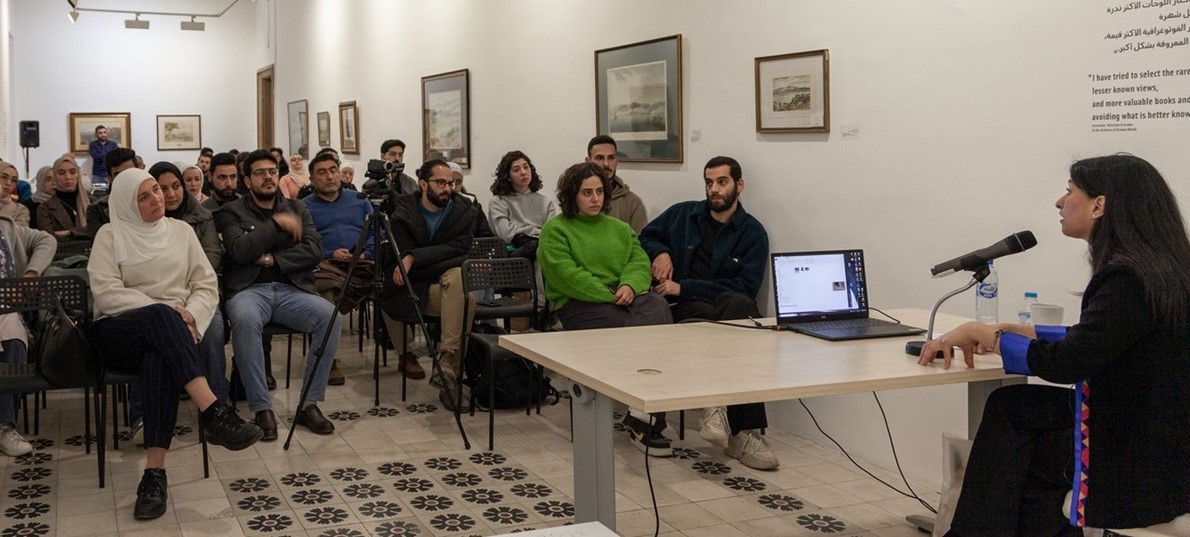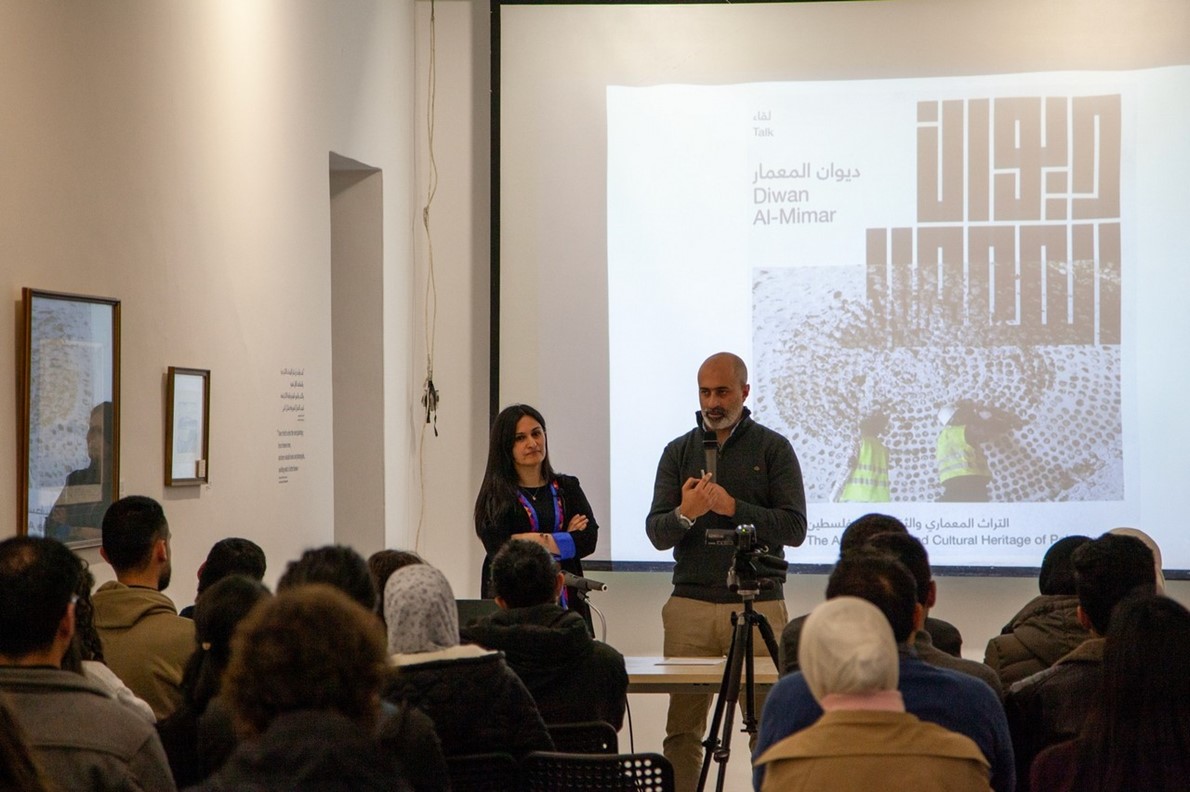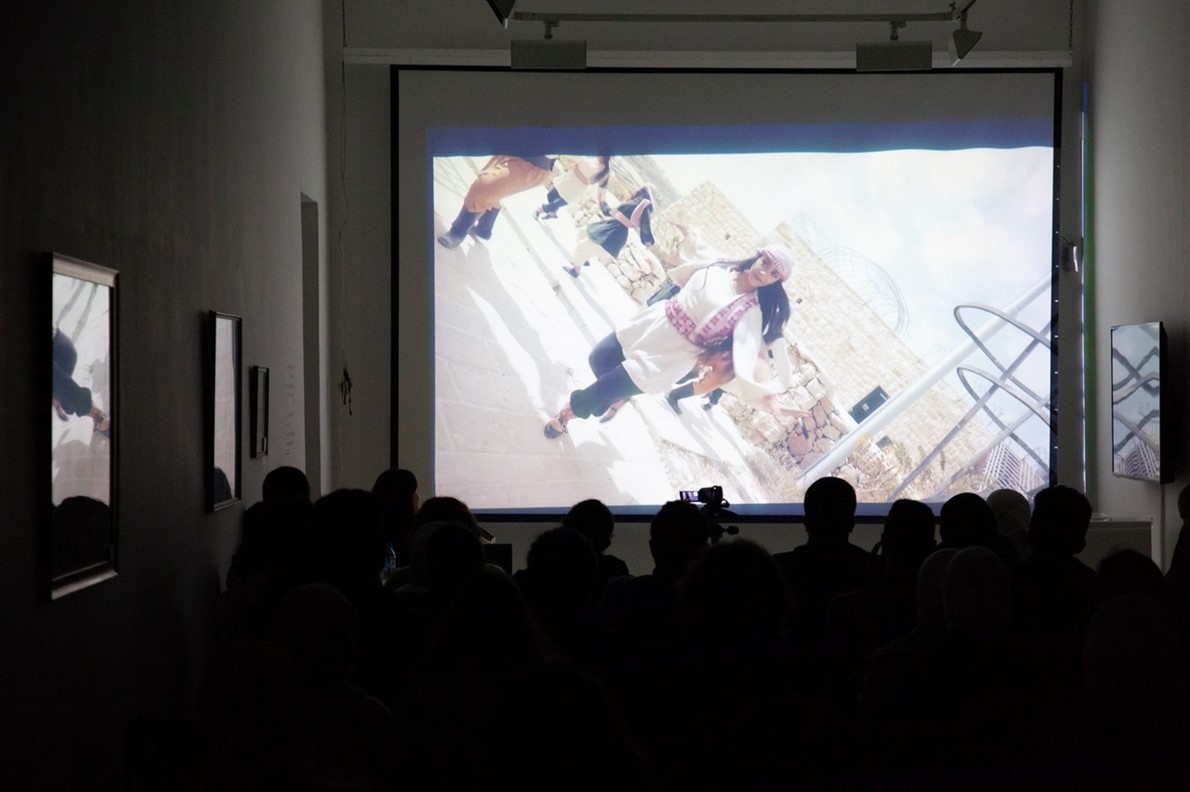Darat Al-Funun is reintroducing a series
of monthly intellectual talks and lectures on architecture, titled “Diwan
Al-Mimar”, 23 years after the original series was presented.
اضافة اعلان
The revived monthly talks focus on
collective and individual architectural practices that investigate the broader
concept of architecture and explore the relationships between cities, texts,
and languages.
 Shatha Safi, the
director of Riwaq Center for Architectural Conservation, gives a talk at Darat
Al-Funun on January 28. (Photo: Roa’a AbuNada/Jordan News)
Shatha Safi, the
director of Riwaq Center for Architectural Conservation, gives a talk at Darat
Al-Funun on January 28. (Photo: Roa’a AbuNada/Jordan News)
The first talk, held at Darat
Al-Funun on January 28, was given by Shatha Safi, the director of Riwaq Center
for Architectural Conservation. The talk focused on Riwaq’s 30-year experience
of preserving, restoring, and rehabilitating the architectural and cultural
heritage of Palestine. The session opened with a presentation by Safi and
continued with three rounds of Q&A.
An architect’s return to PalestineRiwaq began with a Palestinian
woman, Suad Amiry, who was brought up in Amman.
“She dared to dream, and she had
the certainty that her dream would come true,” said Safi. “Her aspiration was
to return to Palestine as an architect, to protect and preserve the buildings that
served as the foundation for her memories of her father's descriptions of
Palestine.”
“Our primary concern is the nature of the relationship and interaction between people and architecture. We look beyond stones and buildings to the meaning behind them.”
In 1991, Amiry founded Riwaq, a
center with a vision to restore the architecture of rural Palestine.
According to Safi, the first Riwaq
project was to document Palestine’s old historical buildings, because “one cannot
operate without knowing what… the situation on the ground is”.

A 10-year journey of comprehensive
architectural survey and documentation took place between 1994 and 2004. Hundreds
of architects and architecture students set out to document more than 50,320
buildings in 122 villages, town, and cities, compiled into Riwaq’s Registry of
Historic Buildings.
The language of stonesSpeaking about Riwaq, Safi said: “Our
primary concern is the nature of the relationship and interaction between people
and architecture. We look beyond stones and buildings to the meaning behind
them.”
“Throughout our process of documenting old towns and historical buildings, we came face-to-face with a social life that reflects and embodies the Palestinian heritage.”
“Stones are our way to understand
a community and its origins, to get a peek at the social relationships within,”
she continued. “Throughout our process of documenting old towns and historical
buildings, we came face-to-face with a social life that reflects and embodies the
Palestinian heritage.”
As an example, she said, Riwaq’s
architects would infer from various architectural ornaments the skill levels of
the craftsmen who created them, their underlying symbolism, and the general
taste of the populace.
Following the survey, it was found
that 50 Palestinian villages were home to over 50 percent of the historic
structures in the rural areas of the West Bank and Gaza's. With this finding, Riwaq
has adopted a vision focusing on those 50 villages, working on rehabilitation
projects to improve services, infrastructure, and living conditions for public
and private spaces.
The 50 Villages Project, as
Riwaq’s vision has become known, is a tool to reconstruct an alternative
Palestinian map.
“We create vivid examples of what it means to adapt historical buildings and reclaim spaces to become part of our present and future, not just remnants of the distant past,”
“The absence of full protection for these historical buildings, a
lack of awareness, and the benefits gained by the occupation from their
erasure, meant most of the historical buildings were deserted and found in
ruins,” Safi recalled.
‘Not just remnants of the distant
past’Riwaq began converting the historical
buildings to community centers, restoring over 130 to host institutions,
associations, and youth clubs.
“We create vivid examples of what
it means to adapt historical buildings and reclaim spaces to become part of our
present and future, not just remnants of the distant past,” said the director.
For example, one of Riwaq’s
projects was to renovate and repurpose a building in lower Ramallah to use as a
youth music training center.

Riwaq also contributes to the production and dissemination of
knowledge about heritage through its research and publications program. The
center established a library of books authored about Palestine by Palestinian
architects, historians, and researchers.
“We also provide Palestinian and Arab libraries with books that we
write and it puts our own narrative forward,” Safi said.
Challenging colonial bordersAt the conclusion of the presentation, the director explained that Riwaq’s future steps include ”going regional”.
“Palestine came into existence in its current form because of the
occupation. In order to have a more thorough understanding of it, we must study
its geographical and historical ties with the Levant: Egypt, Syria, Lebanon,
and Jordan,” she said.
“In this way, we challenge political borders and the fragmentation
that was created by colonialism.”
Read more Lifestyle
Jordan News








